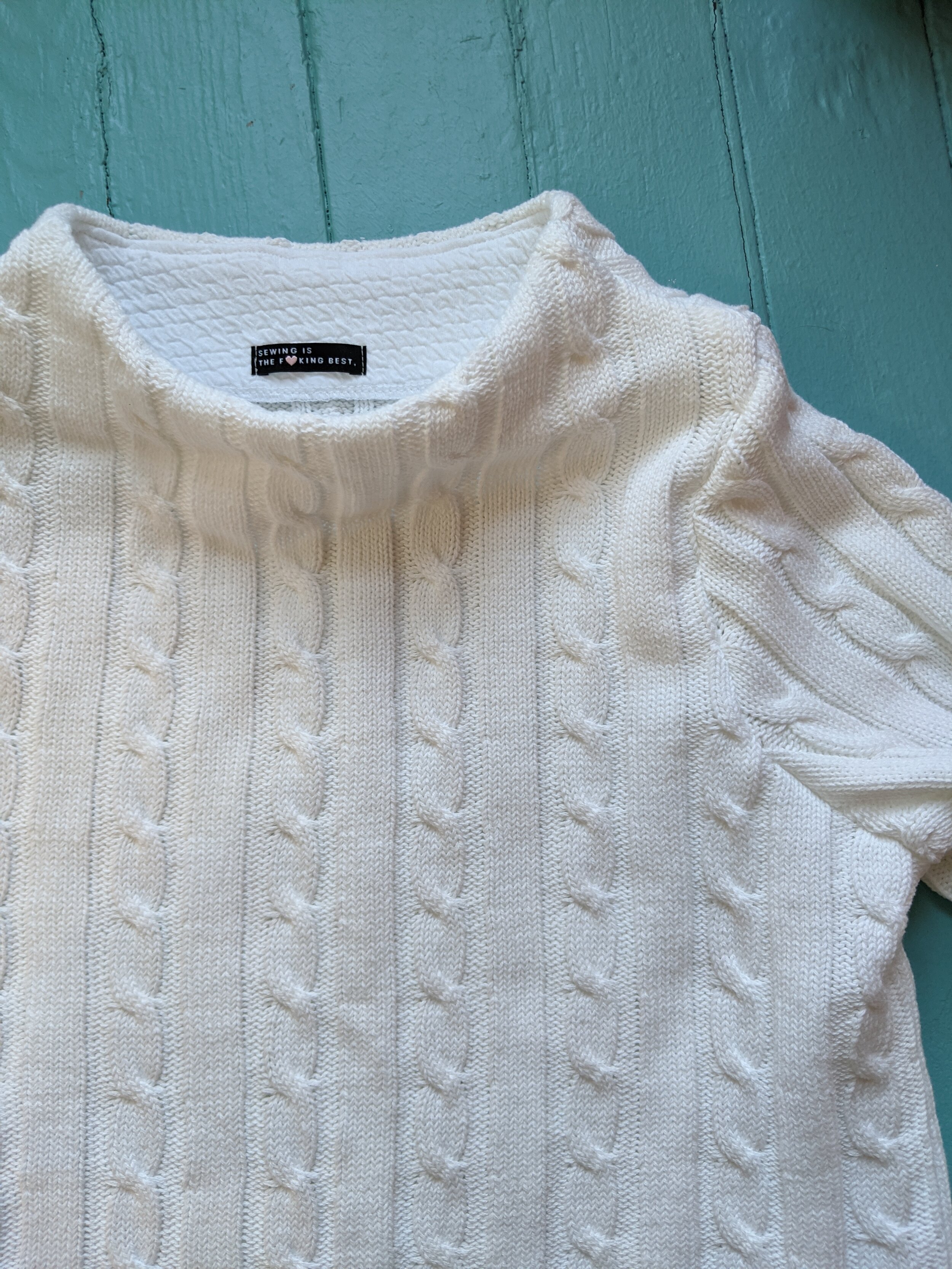I purchased the Sheridan Sweater pattern by Hey June the day it released and immediately, as in the same day, sewed one up.
You can read the full pattern details in the official launch post.
If you know me, you probably know how much I hate facings, particularly for finishing necklines. Well the “a built-up bateau neckline,” view B, on Sheridan uses a neck facing and it’s the exception to my rule.
There’s another popular sweater pattern with a similar-looking neck, but it doesn’t have a facing in its design. I made a version of the other sweater once using french terry, and I HATED the neck. Even though I had used a recommended fabric, the neck was a floppy, flippy, curly mess. I’ve more or less never worn that sweater.
I had a rather lightweight modal knit I was looking to sew up when Sheridan came into my life. While my fabric didn’t meet the description of the suggested materials, it worked well because I used a thicker rib knit fabric for the facing.
I love that a facing here means I can use drapey fabrics for Sheridan and I can add a pop of color or contrast inside the neck.
Pro tip! Definitely pay attention to the direction of stretch for the interfacing used to stabilize the facing. I was trying to use up some oddly shaped tricot scraps and was probably distracted by a small dependant. My facing had basically no stretch once I fused the interfacing. Thankfully, I noticed this before I fully assembled the top. My solution could have been to re-cut these pieces, but certainly didn’t. I went ahead and pre-stretched my facing, forcing my head through it. There were some ripping noises in the process and they all lived happily ever after. (Wearing Sheridans.)
full length elasticated sleeve option
I think you can appreciate that my fabric is rather thin. But the neck on my Sheridan is 100.
Worn with Ginger jeans in black twill
Naturally, I made more Sheridans. My most favorite version follows.
Birkin Flares
This one is made from a 100% cotton throw blanket that the Cleverest of Colleens purchased for its lovely cable knit design. It had become a stash resident since she had visited in May.
The neckline is successful here too because I was able to use a stable double knit for the facing.
I used the same size (8) for this version, but I did sew it with a wider seam allowance to account for the somewhat open-ness of the knit. I used a long straight stitch (~3.4mm) on my regular machine with the foot pressure turned as low as possible for all the seaming. Then I finished the seam allowances with my serger. This ensured my sweater with no spandex (and therefore poor recovery) didn’t end up a wavy, stretched out mess. (We’ve all been there. It ain’t pretty.)
In summary, facings aren’t always evil.
THE END.









